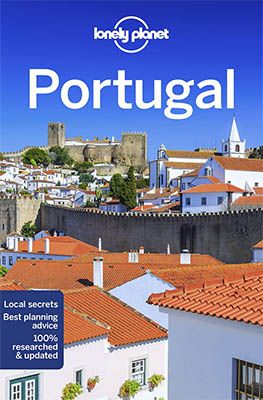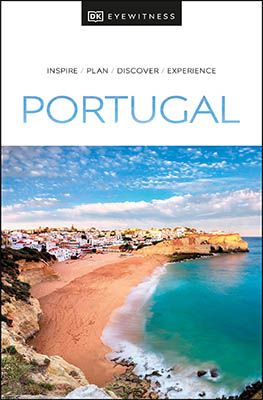We begin our Alentejo tour in the capital city, Évora. This picturesque, enchanting town is rich in history, culture and architecture. The old town is still partly surrounded by medieval walls. Within those walls, many beautiful white-painted historic buildings line the cobbled streets. And all this within walking distance.
Évora has existed for many thousands of years. The city only really became known when the Romans took Évora. In the 8th century, the Moors conquered the city. In the following centuries, the Portuguese and the Moors conquered Évora several times. Thanks to this “shifting”, the city was able to develop culturally and religiously. During the Middle Ages, the city continued to flourish as a cultural (and gastronomic) capital. Thanks to its diverse cultures, religions and architectural styles, Évora became a UNESCO World Heritage Site in 1986.
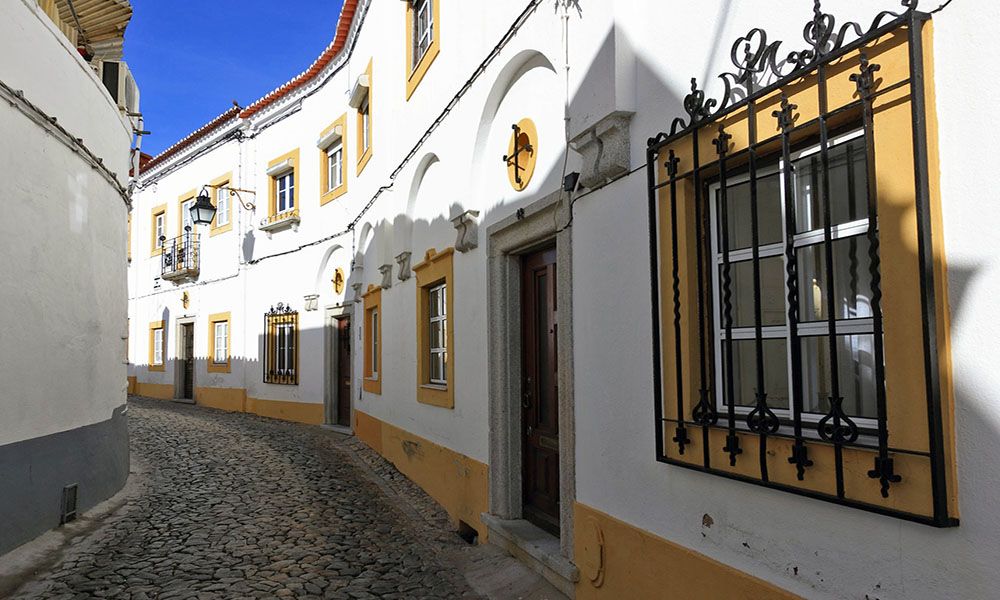
Our walking and cycling tour in Évora
Mario, our guide for today, picks us up after breakfast. It is still quite chilly, but the clear blue sky bodes well for today. Mário is a graduated archaeologist with a lot of knowledge about the city’s history. Surprisingly, the first place of interest he explains is our hotel. In the 16th century, the hotel was a palace with a beautiful chapel. The chapel, as well as the vaulted ceilings we saw inside, are beautifully preserved.
We cycle through a narrow, cobbled street and arrive at the arches of an old aqueduct. It looks Roman but Mário explains that the aqueduct is only 500 years old. The impressive piece of architecture is no less than nine kilometres long. The ‘Aqueduct of Silver Water’ supplied the city with drinking water from the interior. Houses, shops and cafes have been built between the arches, which are up to 26 metres high.
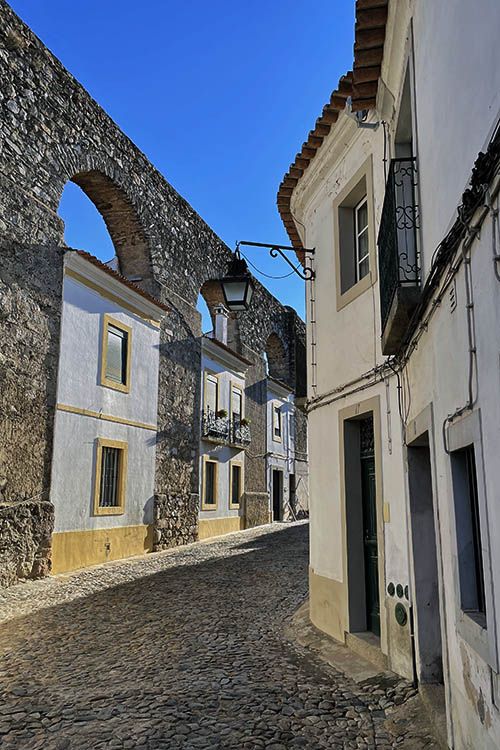
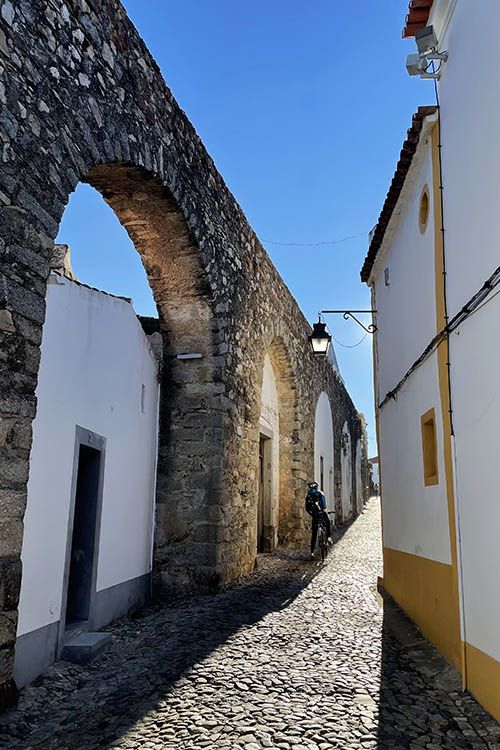
Roman temple
We continue our cycling tour further up the hill. Thanks to the many gears on our mountain bikes, the climb is a piece of cake. After winding our way through the narrow, picturesque streets, we reach a large square. In the middle of the square are the 14 remaining granite columns of a Roman temple. Although the Roman temple dates from the 2nd century, it is in remarkably good condition. This is because in the Middle Ages, a wall surrounded the temple. The beautiful structure has retained much of its original character.
Because the temple stands out beautifully against the whitewashed old buildings, we keep taking pictures. Our guide waits very patiently. Then he takes us into a small park. This small park, Jardim Diana, refers to Diana: the ancient goddess of the hunt. The temple is also called the Temple of Diana by some. But according to Mário, this is unjustified. We enjoy the wide view from the park of the ‘newer’, white city. Quickly afterwards we mount our iron horse to set course for the Cathedral of Évora.
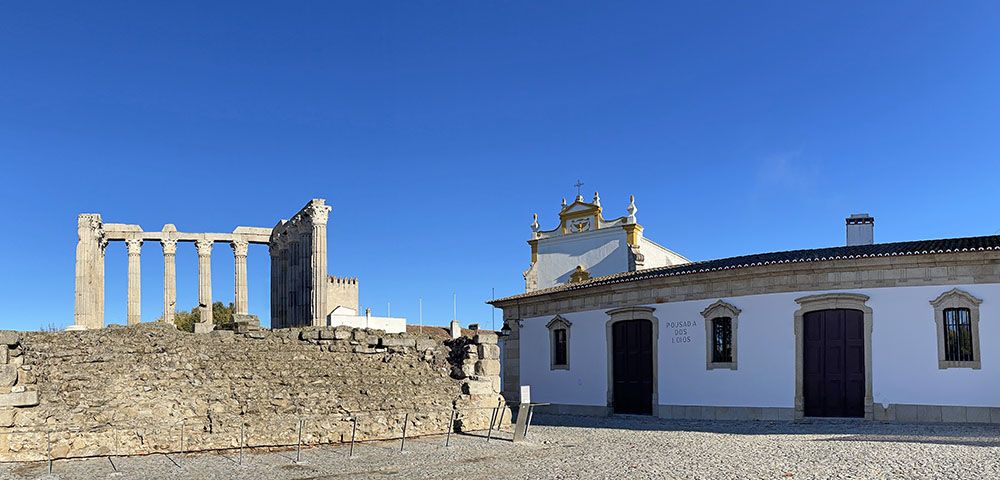
Cathedral of Évora
We park our bicycle at a church building next to one of Évora’s university buildings. We first take a look at the idyllic square of the university. Mário proudly tells us that he studied there. What a great place to spend your student days, we agree.
The Gothic church building, consisting of two asymmetric towers, is the Cathedral of Évora. At first glance, the cathedral, which dates back to 1300, looks more like a fortress. The main portal between the towers contains a beautifully carved representation of the apostles. However, the interior of the cathedral is much more impressive. There is an 18th century high altar and a choir of polished marble. There is also a treasury full of artifacts made of gold, silver and other precious metals.
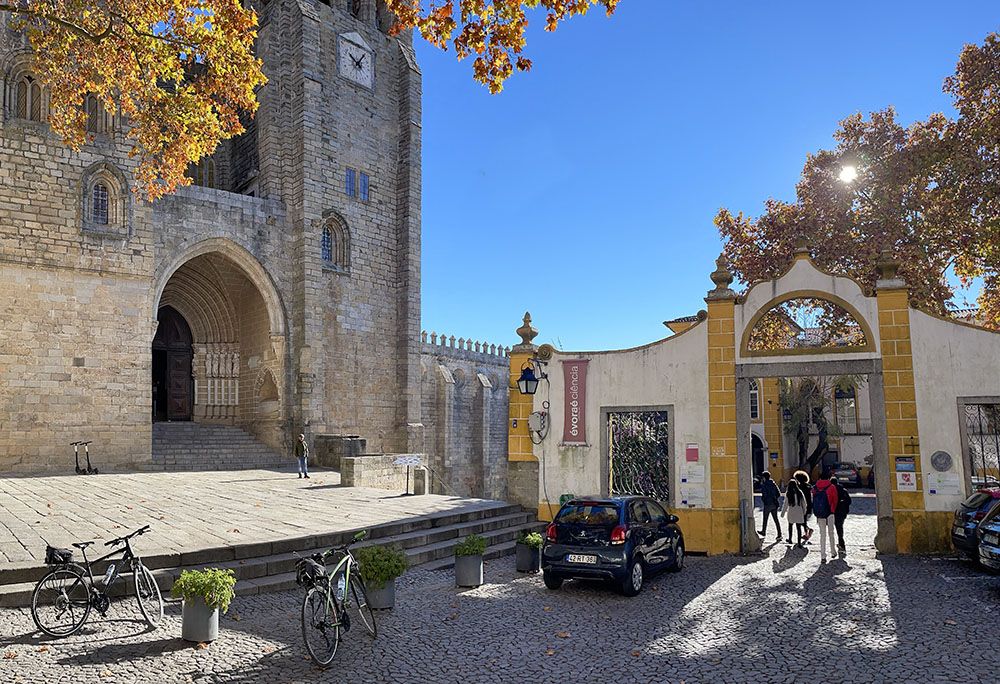
Saint Francis Church
Our cycle tour then takes us to the large Saint Francis Church and monastery from the end of the 15th century. The church also looks grand on the inside. The wide, vaulted nave is a masterpiece of late Gothic architecture. We are particularly impressed by the side chapels. Each chapel is a work of art in its own right. However, we are particularly curious about another neighbouring chapel that we have heard about before: the Chapel of Bones.
The Chapel of Bones
This chapel was built in the 17th century in a style that was popular at the time. Its purpose was to encourage people to think about the transience of life. We want to enter the chapel but our guide points to a sign. It says: “Nós ossos que aqui estamos, pelos vossos esperamos”. Freely translated, it means: “We whose bones are here, wait for yours”.
Inside the chapel, the walls and pillars are completely covered with thousands of bones and skulls. They come from thousands of bodies excavated from the city’s cemeteries. The morbid scene looks surreal, and because of the sparse light even a little bit creepy. The two skeletons in the display case add to the grim atmosphere. Nevertheless, we think it is an absolute must-see!
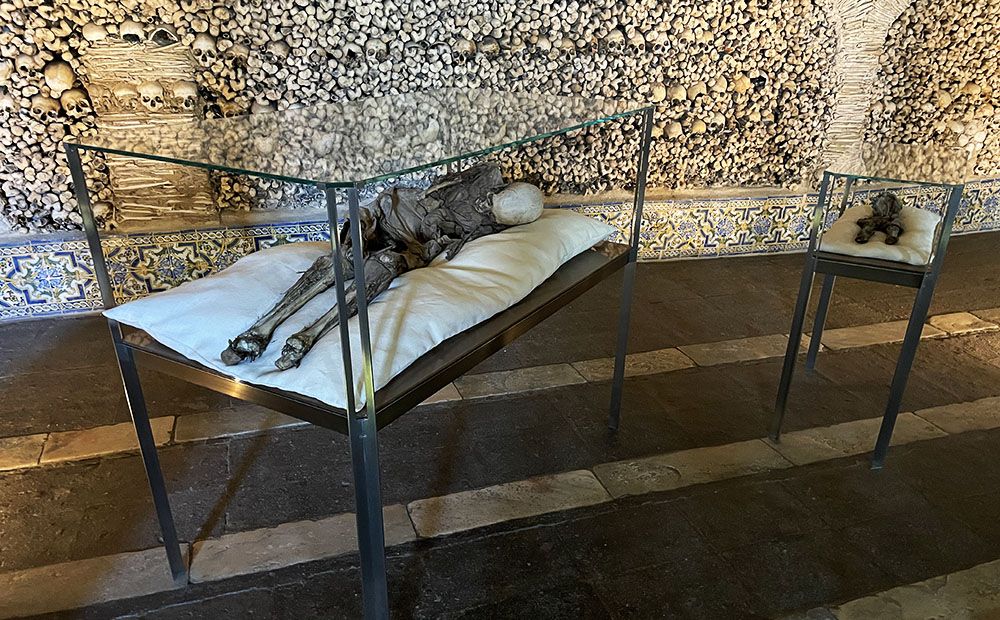
Saint FThe Canha da Silva collection of nativity scenes
Even before we leave the Saint Francis building complex, Mário takes us up the stairs. He leads us around a small museum with a collection from the monastery. We do not find it very special. In the galleries above the side chapels, however, we get to see a large collection of nativity scenes. There are literally hundreds of them, made by both Portuguese and foreign artists. Some are almost a metre high, others as small as a matchbox. Very nice to see.
Évora’s public municipal park
On the way to the old city wall, we will cross Évora’s large city park. In this fairly elongated, green city park, it is a hive of activity. We see young and old, charmingly adorned with mouth caps, dancing to Portuguese folklore. At the large fountain, proud peacocks keep a low profile in the face of all this merriment. No polonaise to their feathers. We leave the park and the old, walled city. For our next excursion is planned: cycling and walking to the source of the aqueduct.
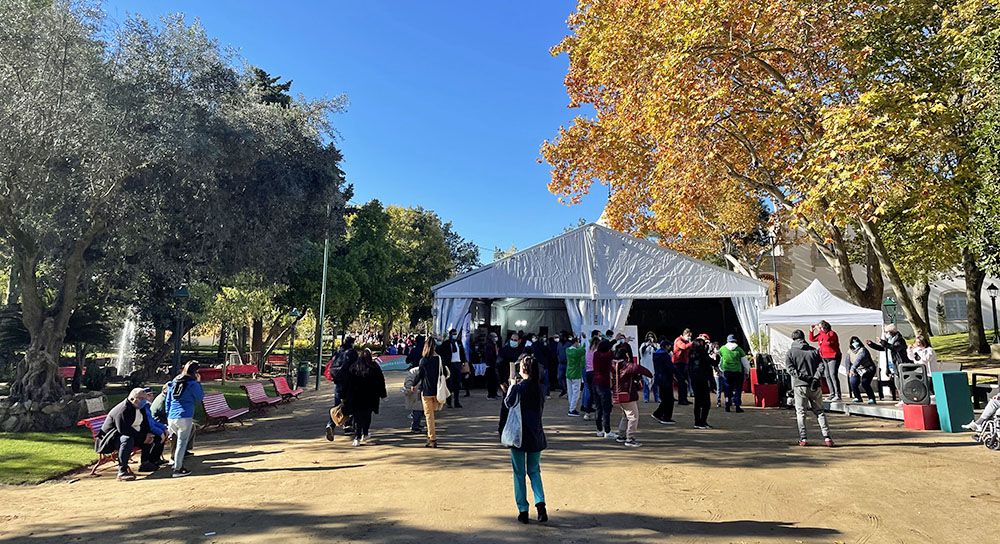
The beautiful, rolling surroundings of Évora
Just outside the city walls, the high aqueduct looms before us. We cycle under it and then turn left into a suburb of Évora. The first part of the ride is a bit boring. Fortunately, this soon changes as soon as we leave the built-up area behind us. The white housing estate gives way to an exceptionally large meadow where we see cattle grazing. There are also some bulls. We take a break while Mário tells us about the bullfighting in the region. The bullfighters show their courage here by literally taking the bull by the horns.
At the edge of the meadow, we pass an old farm. From here, we cycle slowly uphill through a vast olive grove with cork oaks here and there. Suddenly, our guide points to a large bird on the right-hand side. It turns out to be a vulture, a species of bird that is common in these parts. What a beautiful piece of nature we have ended up in!
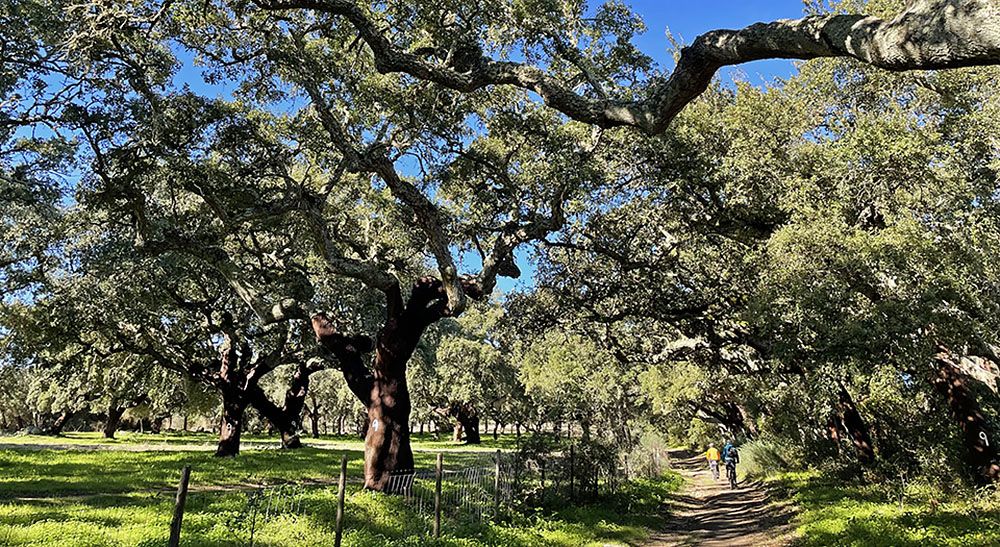
Walk to the source for the aqueduct
Although the cycle route continues to the aqueduct, we leave the bicycles in the bushes. A colleague of Mário’s will pick them up later. We continue along a narrow path between two large orchards. The landscape reminds us of the savannah of Tarangire NP in Tanzania. But less warm, because despite a lovely sunshine, it is still a little chilly.
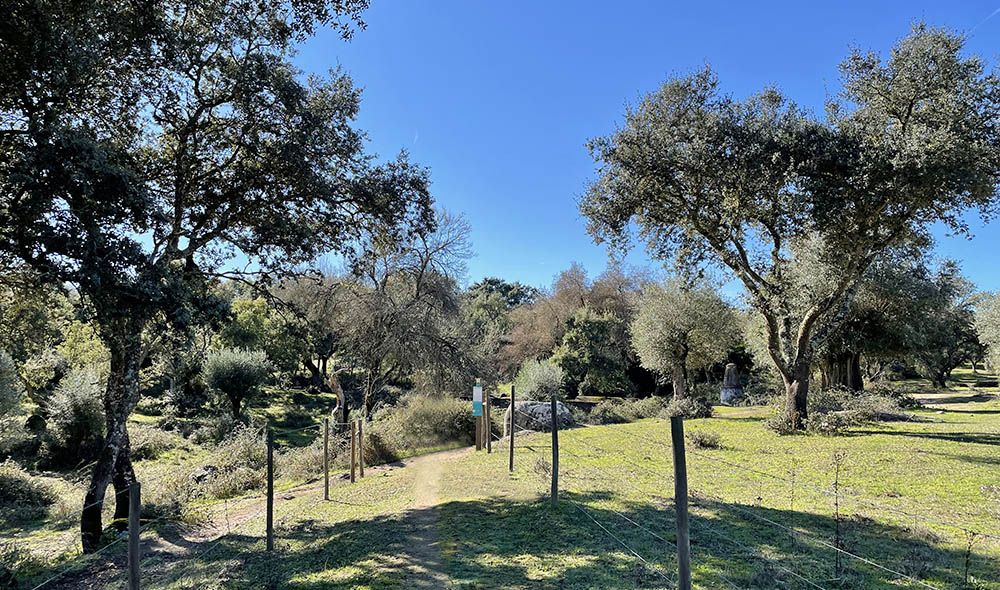
We come to an intersection of dirt roads. At the crossroads is an old stone wall. We are near the source for the aqueduct. From this point, the aqueduct continues towards the city. The drop over nine kilometres is only two metres. We turn left and follow the beautifully situated path parallel to the aqueduct. The sunlight shines through the foliage of the olive trees and cork oaks. What a beautiful sight!
Our guide explains why the trunk of some cork oaks is so dark brown. These trees have already been partly ‘peeled’. Every eight years, the bark of the cork oaks is peeled off very carefully here. The underlying tissue may not be damaged, otherwise the beautiful tree will die. We continue to walk for a few kilometres through the exceptionally beautiful surroundings until we reach our lunch spot: an idyllic-looking farmhouse in the middle of an olive grove.
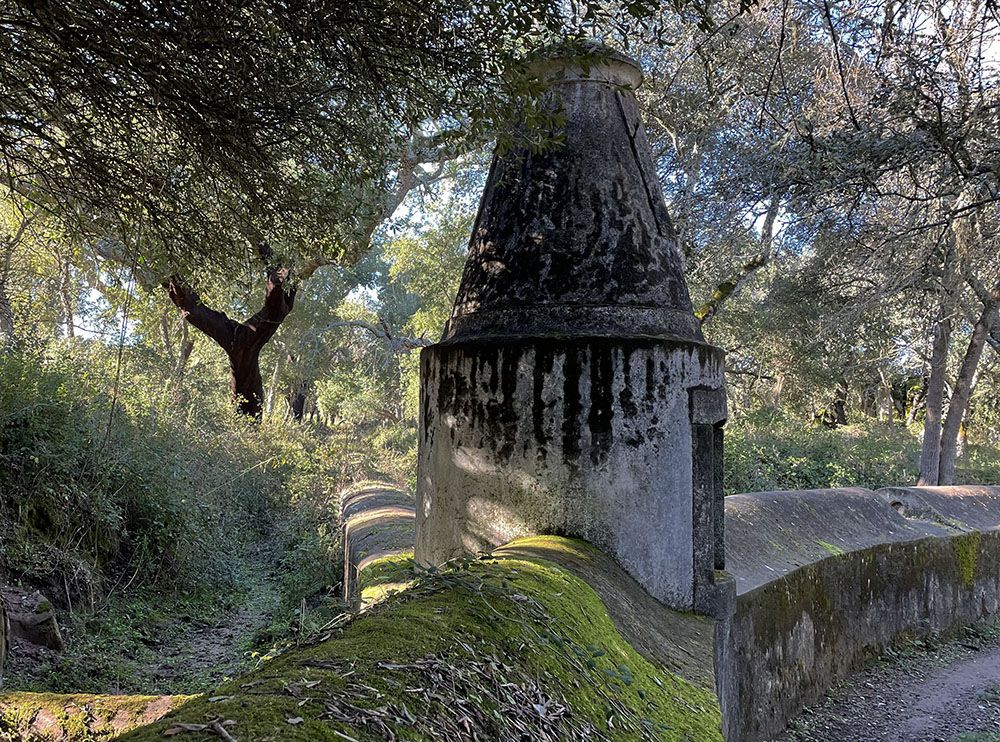
Monte do Serrado de Baixo
At the farm, the owner gives us a warm welcome. First, she gives us a tour of the stylishly decorated farmhouse. She proudly shows us the four spacious rooms of Monte do Serrado de Baixo. And we have to admit: the accommodation looks so unique that we would love to stay there. After the tour, we are invited to join a long, elaborately laid table. We enjoy a delicious, organic lunch. We taste different kinds of olive oil and other tasty snacks that are prepared on the farm.
On the farm, they also give cooking courses. Besides, they organise many other activities like hiking, cycling and canoeing. For example, the combined cycling and walking tour we are doing today is one of their activities.
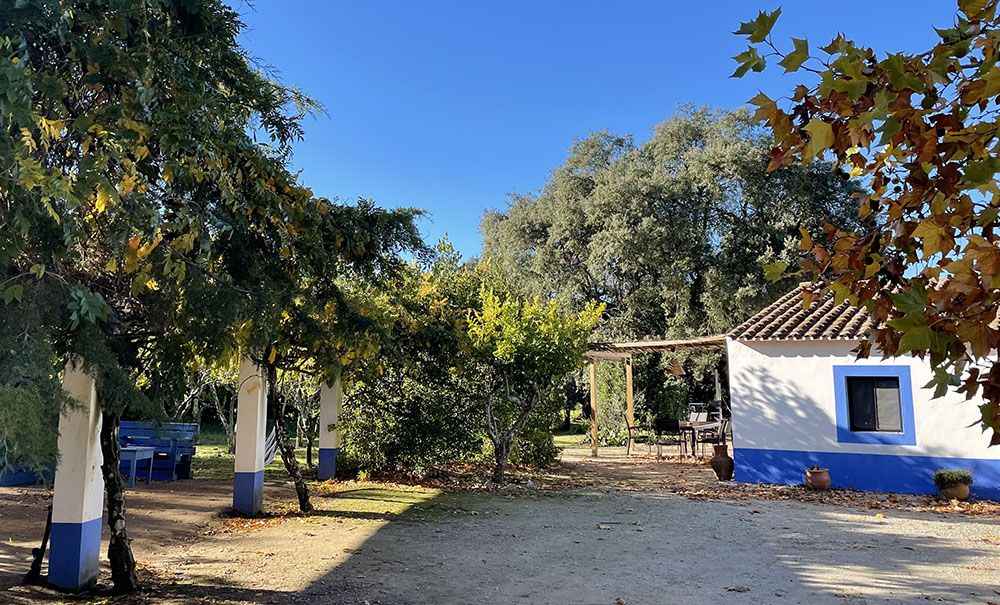
The Cartuxa vineyard
On the way back to Évora, we pass by a large vineyard. It is the Cartuxa vineyard, owned by the Eugénio de Almeida Foundation. The Foundation has over 600 hectares of vines. We cannot resist the temptation and soon find ourselves at a real wine tasting. The most delicious wines present themselves, each and every one of them with an (inter)national reputation.
After the wine tasting, we get a tour of the impressive wine cellars. When we return to the showroom of the winery, we look at the wide range of wines on offer. It is not only wines that we find there. The foundation also produces various high-quality olive oils. We decide to buy a bottle as a souvenir. A beautiful and especially tasty souvenir of this active, but fantastic day!
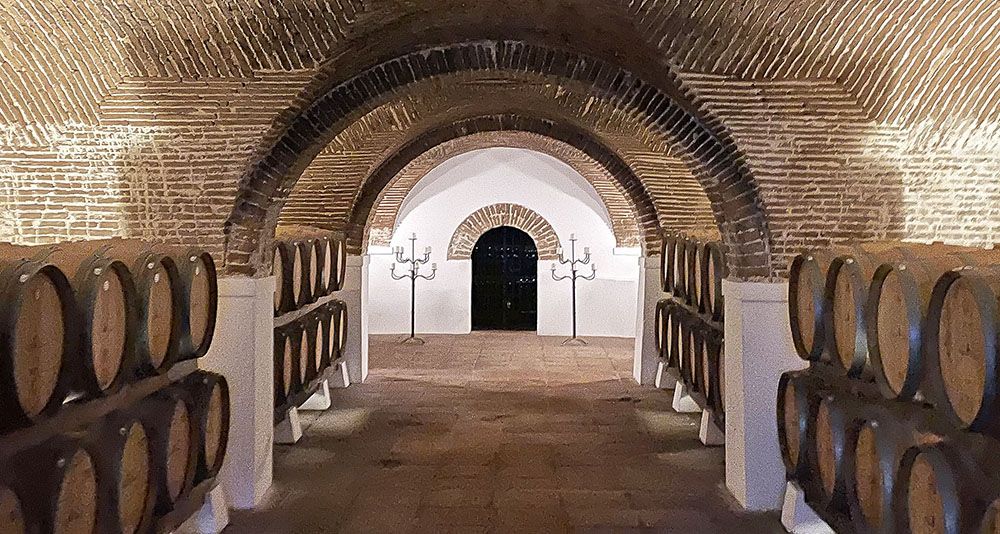
Practicalities of Walking and Cycling in and around Évora
No, a normal condition is sufficient. In total you walk eight kilometres and you cycle ten kilometres. Most of it is on flat terrain. Occasionally, the road or path goes up "false flat". With a normal condition, this is very doable.
There are actually two tours you can do. The one we did was the Aqueduct and City Tour. It takes more than six hours. The other tour you can do is the Évora Bike and Hike Tour. You will see almost the same things as the Aqueduct and City Tour but in only four hours. It does not include lunch either. Our advice is to definitely do the long version.
The longer tour costs 58 euros per person. This includes the guide, water, a snack, lunch, visit and use of the bicycle. You can book the tour through the portugalbestcycling.com website. The short four-hour tour also costs 40 euros per person. This is excluding lunch.
- Mar de Ar Aqueduto in Évora. This luxury hotel is located in a 16th century palace, just inside the old city walls of the UNESCO town. Our room was very spacious and fully equipped. We found the five-star hotel, which even has a spa, to be relatively affordable. In low season, you pay around 120 euros for two people including breakfast.
- The picturesque old farmhouse of Monte do Serrado de Baixo. The tastefully furnished farmhouse is located in the middle of a cork oak and olive grove. They serve delicious local dishes and excellent wines.
- Another tip: Pousada Convento de Evora, located near the ancient Roman temple in the heart of Évora's old town. The chic hotel is located in an old convent dating back to the 15th century. Despite the beautiful, classic interior, the facilities are modern and comfortable.
- In the old town of Évora you will find many really good restaurants. If you want to try something local, we can definitely recommend the affordable Dom Joaquim. It is not without reason that this restaurant has won several awards. Even the Michelin guide mentions this restaurant. Tip: ask for typical small starters of the region with a matching Alentejo wine.
- During our cycling and walking tour around Évora, we enjoyed a delicious, organic lunch at Monte do Serrado de Baixo. For that reason alone, it is a good idea to book the long tour. Then this fantastic lunch is included in the price.
- A small, very cosy restaurant that always gets very good reviews is Botequim da Mouraria. Not too expensive but delicious Portuguese dishes. Highly recommended!

